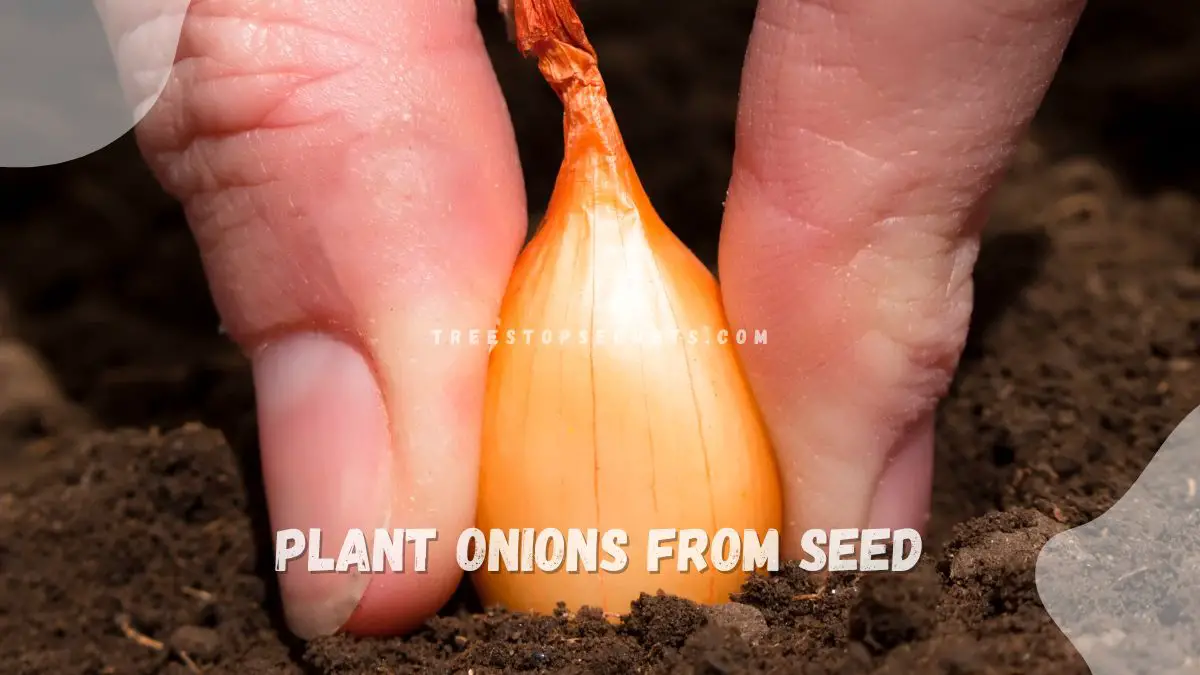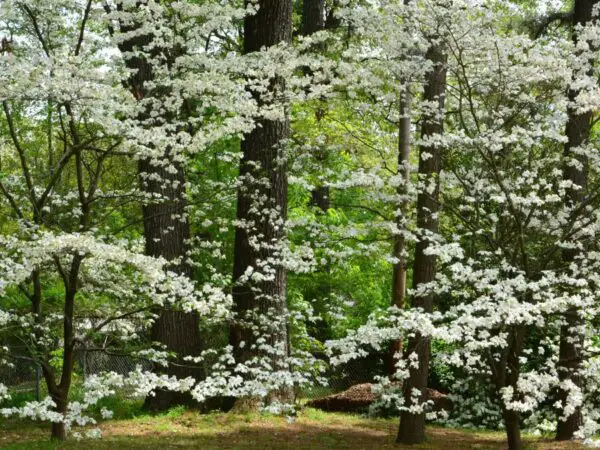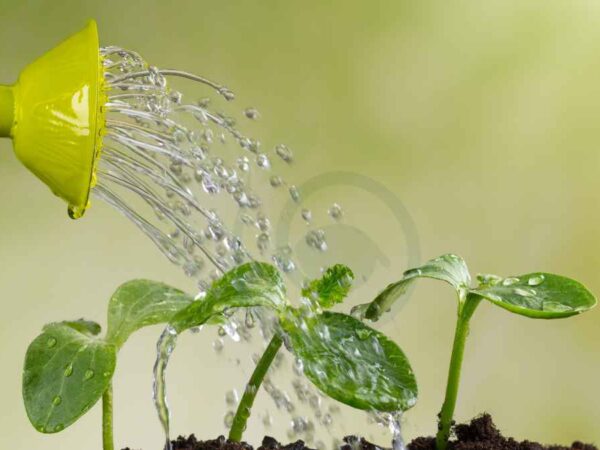Want to learn how to plant onions from seed? Delving into the historical context of onion cultivation reveals fascinating insights into this age-old practice. By understanding the traditional methods and evolution of planting onions, you can enhance your gardening skills and unlock the secrets to a successful harvest. From ancient civilizations to modern-day techniques, the journey of planting onions from seed is both enriching and rewarding.
Key Takeaways
- Start your onion-growing journey by understanding the benefits of growing onions from seed, such as a wider variety selection and cost-effectiveness.
- Choose the right onion varieties, such as red onions and small onions, based on your preferences and local climate to ensure successful growth in your garden.
- Begin the process by starting onion seeds indoors to control growing conditions and give them a head start.
- When sowing onion seeds, ensure proper spacing and depth for optimal germination and growth.
- Care for your onion seedlings by providing adequate sunlight, water, and nutrients to promote healthy development.
- Transplant your onion seedlings into the garden at the right time and in suitable soil conditions for continued growth.
Benefits of Growing Onions from Seed
Cost Effective
Growing onions from seed can save money compared to buying onion sets. Starting from seed allows for long-term cost benefits as seeds are typically more affordable than sets. This method is a budget-friendly option for avid gardeners looking to cut costs.
- Seed cost savings
- Long-term financial advantages
- Budget-friendly gardening option
Researching different onion varieties is crucial to match your climate and growing conditions. Factors like bulb size, flavor, and storage capabilities should be considered when selecting onion types. The diverse range of onion varieties available caters to various preferences.
- Climate suitability research
- Consideration of bulb size and flavor
- Diverse onion types selection
Healthier Plants
Starting onions from seed promotes healthier plant growth due to the plants' increased vigor. Seed-grown onions exhibit improved disease resistance and overall plant strength. Growing from seed results in stronger and more resilient onion plants in the long run.
- Enhanced plant vigor
- Disease-resistant properties
- Improved plant resilience
Choosing Onion Varieties
Understanding Types
Long-Day Onions
Long-day onions require extended hours of daylight to grow successfully. These varieties typically need 14-16 hours of daylight. Plant them in early spring to maximize their growth potential. Popular long-day onion varieties include Walla Walla and Ailsa Craig.
Short-Day Onions
Short-day onions thrive in regions with shorter daylight periods, needing only 10-12 hours of daylight. These varieties are best planted in late fall or winter for optimal bulb development. Common short-day onion types include Texas Early Grano and Red Creole.
Day-Neutral Onions
Day-neutral onions are adaptable to various daylight conditions, making them versatile for different regions. They offer planting flexibility throughout the year. Varieties like Candy and Yellow Globe are excellent choices for consistent harvests.
Selecting for Your Region
When choosing onion varieties, research the best options for your specific geographical area. Consider factors such as temperature, day length, and soil quality. Local gardening resources can provide valuable insights into the most suitable onion varieties for successful cultivation.
Starting Seeds Indoors
Best Timing
Determining the optimal timing for starting onion seeds indoors is crucial. It depends on your local frost dates, ensuring seedlings are ready for transplanting at the right time. Timing is key to healthy plants with robust bulb development.
Plan ahead to align with your area's frost dates. Timing impacts the growth and quality of onion bulbs. Healthy seedlings lead to successful transplanting and growth.
Seed Quality
Checking Expiry Dates
Verify expiration dates on onion seed packets before planting. Expired seeds can affect germination rates and plant health. Maximize success with older seeds by implementing effective strategies.
Expired seeds may result in poor germination rates. Seed viability directly impacts plant growth. Implement strategies to boost success with older seeds.
Pelleted vs Loose Seeds
Compare advantages and disadvantages of pelleted and loose onion seeds. Seed form affects planting efficiency and seedling development. Choose the type best suited to your gardening preferences and practices.
Pelleted seeds offer easier handling and sowing. Loose seeds provide more control over planting density. Consider your gardening style when choosing seed type.
Gathering Supplies
When gathering supplies for starting onion seeds indoors, ensure you have all necessary items ready. These include seed trays, potting mix, watering can, and grow lights. Prepare a warm, well-lit area for optimal seed germination and growth.
Seed trays help organize and support seedlings. Potting mix provides essential nutrients for growth. Grow lights mimic natural sunlight for healthy development.
Sowing Onion Seeds
Soil Preparation
Before sowing onion seeds, ensure the soil is well-draining and loose to allow for proper root development. Loamy or sandy soil types are ideal for onions as they prevent waterlogging, which can lead to rot. Adding compost or aged manure can improve soil fertility, promoting healthy growth.
To enhance soil fertility, conduct a soil test to determine nutrient levels. Onions thrive in slightly acidic soil with a pH level between 6.0 and 7.5. Avoid planting onions in compacted or clayey soils as they hinder bulb expansion and overall growth. Aerate the soil by tilling it before planting to promote oxygen circulation.
Planting Techniques
When planting onion seeds indoors, sow them at a depth of around a quarter of an inch. Space the seeds approximately half an inch apart to allow room for growth. Cover the seeds lightly with soil and gently pat down to ensure good seed-to-soil contact. Maintain consistent moisture levels throughout the germination period.
Transplant onion plants once they reach a height of about six inches. Choose a sunny location with well-draining soil for transplanting. Dig small holes that accommodate the root system and place the seedlings carefully into them. Water thoroughly after transplanting to help the plants establish themselves.
Light and Warmth
Onion seeds require ample sunlight to germinate successfully. Provide at least 14-16 hours of light daily for optimal growth. Consider using grow lights if natural sunlight is insufficient or during the winter months when daylight hours are shorter. Maintain a temperature range between 60-75°F (15-24°C) for best results.
During the germination phase, ensure the seeds are kept warm to encourage sprouting. Use a heat mat set at around 68°F (20°C) under the seed trays to maintain consistent warmth. Monitor the temperature closely to prevent overheating, which can damage the seeds.
Caring for Onion Seedlings
Taking care of onion seedlings is crucial to ensure healthy growth and a bountiful harvest. Proper watering, feeding, and pruning are essential practices to follow.
Watering Practices
Onion seedlings require consistent moisture to thrive. Water them regularly, ensuring the soil remains damp but not waterlogged. Avoid letting the soil dry out completely.
To prevent issues like rot or disease, water your onion seedlings at the base of the plant rather than overhead. This helps keep the foliage dry and reduces the risk of fungal infections.
Feeding Schedule
Fertilizing your onion seedlings is important for their development. Use a balanced fertilizer with equal parts nitrogen, phosphorus, and potassium. Apply the fertilizer every two to three weeks during the growing season.
Avoid over-fertilizing as it can lead to excessive foliage growth at the expense of bulb development. Follow the recommended dosage on the fertilizer package for best results.
Pruning Tips
Pruning plays a vital role in promoting strong and healthy onion seedlings. Remove any yellowing or damaged leaves to encourage new growth and prevent diseases from spreading.
Trim back any flower stalks that emerge on your onion seedlings. These stalks divert energy away from bulb formation, so removing them helps redirect nutrients for better bulb development.
Transplanting to the Garden
When to Move
Transplant your onion seedlings to the garden when they have grown to about 4-6 inches tall. Avoid planting them too early or too late in the growing season. Wait until after the last frost date in your area.
Moving your seedlings at the right time ensures they have a good start in the garden. Late transplanting can lead to smaller bulbs, while early transplanting risks damage from cold weather.
Hardening Off
Before planting your onions in the garden, harden off your seedlings. Gradually expose them to outdoor conditions like sun and wind. Start by placing them outside for a few hours each day, then increase the time over a week.
Hardening off helps your seedlings acclimate to the outdoor environment. Sudden exposure to harsh conditions can shock the plants, affecting their growth and health.
Planting Out
When planting your onion seedlings in the garden, choose a sunny location with well-draining soil. Prepare the soil by adding compost or fertilizer to ensure good nutrient levels. Space your plants 4-6 inches apart in rows.
Plant your seedlings at the same depth as they were growing in their containers. Water them well after planting and apply a layer of mulch around the base of each plant.
Ensuring Successful Growth
Pest Management
Pests can harm onion plants, affecting their growth and yield. Common pests include onion maggots and thrips.
To manage pests effectively, consider using row covers to prevent adult flies from laying eggs on the soil.
Applying organic insecticides like neem oil can help control pest infestations without harming beneficial insects.
Disease Prevention
Diseases like downy mildew and botrytis neck rot can pose significant threats to onion plants.
To prevent diseases, ensure proper spacing between plants to promote air circulation, reducing humidity levels that favor disease development.
Moreover, practicing crop rotation by avoiding planting onions in the same area year after year can help prevent soil-borne diseases.
Harvesting and Saving Seeds
When to Harvest
Onions are ready for harvest when the tops turn yellow and start to fall over. Gently pull them out of the ground and lay them out to cure for a few days. This process allows the outer skin to dry, protecting the inner layers. Ensure they are fully dried before storing.
Storing Onions
To store onions properly, choose a cool, dry place with good air circulation. Avoid areas with direct sunlight as it can cause sprouting. Store them in mesh bags or crates, ensuring they are not overcrowded. Check regularly for any signs of spoilage.
Saving Seeds for Next Year
Select healthy onions from your harvest for seed saving. Allow them to fully mature on the plant before harvesting the seeds. Once harvested, remove the seeds from the flower head and allow them to dry completely. Store the seeds in a cool, dark place in a sealed container.
Summary
You've learned the ins and outs of planting onions from seed, from selecting the right varieties to caring for seedlings and ensuring successful growth. By following these steps, you're on your way to a bountiful onion harvest. Remember to transplant your seedlings carefully and monitor their progress closely to guarantee a successful outcome. Harvesting and saving seeds will allow you to continue this cycle of growth in the future. Now that you have all the tools and knowledge at your disposal, it's time to roll up your sleeves and get planting!
Frequently Asked Questions
How long does it take for onion seeds to germinate?
Onion seeds typically take 7-10 days to germinate. Maintain consistent moisture and warmth for successful germination.
What are the benefits of growing onions from seed?
Growing onions from seed allows for a wider selection of varieties, better storage potential, and stronger plants compared to using sets.
When should I transplant onion seedlings to the garden?
Transplant onion seedlings when they are about 6-8 inches tall and have developed a strong root system, usually around 4-6 weeks after sowing.
Can I save onion seeds for future planting?
Yes, you can save onion seeds by allowing the flower heads to dry on the plant, harvesting the seeds, and storing them in a cool, dry place for future use.
How often should I water onion seedlings?
Water onion seedlings consistently, ensuring the soil remains evenly moist but not waterlogged. Water deeply when the top inch of soil feels dry to the touch.
Image Source: Paid image from CANVA




